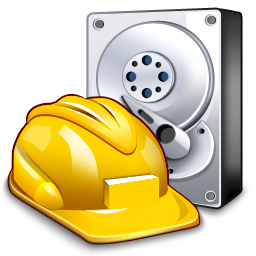You’ve accidentally deleted a file. Your system crashed and you lost data as a result. A virus infiltrated your systems and deleted or otherwise altered important company documents. Many of these scenarios feel unsalvageable, but with the help of data recovery software, your most important enterprise data can be restored and secured. Whether you’ve already lost data or want proactive solutions for a worst-case scenario, read on to learn more about how data recovery software works and what some of the top products in this market have to offer.
Also Read: The Data Backup and Recovery Market
Top Enterprise Data Recovery Solutions
- What is Data Recovery Software?
- How Does Data Recovery Software Work?
- Important Data Recovery Software Features
- Top Data Recovery Software Solutions
- Who Needs Data Recovery Software?
- Enterprise Benefits of Data Recovery Software
What is Data Recovery Software?
Data recovery software is a product or as-a-service software offering that is designed to recover missing or corrupted data from compromised disks, tapes, and other storage media. This kind of software cannot retrieve data from all damaged storage sites or in all data formats, but depending on the software you choose, your team can recover key data in a wide variety of disaster events.
Most data recovery software solutions can save data from these common types of storage devices:
- External storage cards
- Flash and USB drives
- Tape drives
- Hard disks
- RAID subsystems
A wide variety of file formats can be recovered as long as the storage device is compatible with the software:
- Most document formats
- Photos
- Videos
- Music and other audio files
- Executable files
- Archives
- Backups
More on Network Storage: Best NAS Software for Enterprise Storage
How Does Data Recovery Software Work?
Different recovery software solutions use different strategies, but the majority use the same basic algorithms and operations in their system scans. Data recovery software starts by using metadata analysis to find hidden service information and other metadata on file systems. If the software is able to find and use the metadata, it can often reconstruct damaged files, their properties, and the directory hierarchy. This method is attempted first because the metadata can provide all of the information necessary for a total restructure, such as timestamps, original file names, and locations.
Unfortunately, there are several instances in which the metadata is too corrupted or hard to find to be used. In those situations, data recovery software switches to a raw recovery methodology. This method searches for “known content” in the file system or looks for file signatures that it recognizes as the beginning or end of a certain file type. In most cases, data recovery software can find file signatures for different lost data types.
Also Read: Best Backup Software for Securing Your Data
Important Data Recovery Software Features
If your enterprise team is trying to decide which data recovery tool best fits their needs, it’s important for them to consider the following software features before selecting a product:
- Compatibility with existing network tools: Each data recovery solution supports its own set of storage formats, file formats, and operating systems, so it’s important to check if your most commonly used tools will work with a given recovery product.
- Data preview settings: Most users of data recovery software want the option to “try before they buy,” or to preview recovered file data before they approve the recovery process.
- Data filtering and categorization: Especially if your company works with large numbers of varied file and data sets, data filtering and categorization will be key for quick recovery scans.
- Cost: Some data recovery tools come in paid packages or subscription plans, but many free and open source options offer a robust portfolio of features for the average user.
Top Data Recovery Software Solutions
Disk Drill 
Disk Drill is one of the top data recovery solutions on the market, with Windows and Mac options, as well as iOS and Android compatibility. The free version of this tool offers users a wide variety of file and storage format compatibility, previews and backups, and add-on features that make it one of the most popular solutions for data loss prevention. Beyond its core offerings, Disk Drill is often praised for its easy-to-use interface and navigability.
Features:
- Restores deleted files from an HDD, USB drive, and other disk-based storage media
- Free data recovery of up to 500MB
- Free data protection with Recovery Vault
- Free byte-level backups for storage media
- Lost file previews before recoveries available
Top Pro: Disk Drill offers data loss prevention functionalities beyond the norm, such as their Recovery Vault and Guaranteed Recovery features.
Top Con: Disk Drill does now provide details on file condition in its scan results.
Recuva 
Piriform’s Recuva is freemium recovery software that works best for Windows users. Alongside its top data security tools and optional add-on applications, Recuva is widely liked by users who want a flexible tool. Unlike most other software solutions in this market, Recuva comes in both installable and portable formats. This means that users can choose the portable version to avoid accidentally overwriting data on the hard drive, and other potential data loss that comes from user error.
Features:
- Recovery available from memory cards, external hard drives, USB sticks, and other rewritable
- File recovery from damaged or newly formatted drives
- Advanced deep scan mode for trace file detection
- Secure overwrite feature with industry- and military-standard deletion techniques
- Optional access to Ccleaner, Defraggler, and Speccy tools
Top Pro: Recuva’s free version offers unlimited recovery bandwidth.
Top Con: No official support structure is available for the free version of Recuva.
Commvault Backup and Recovery 
Many enterprises are turning to recovery solutions like Commvault’s Backup and Recovery because of their emphasis on protecting data across workloads, environments, and migration efforts. With so many people now moving some or all of their data to cloud environments, it’s important to find tools like Commvault that allow you to monitor and manage files from a single dashboard. Beyond their commitment to retrieving lost data in all different enterprise settings, Commvault also excels in the area of data security, with offerings like end-to-end encryption and built-in ransomware protection.
Features:
- Comprehensive workload coverage across files, apps, databases, containers, and cloud formats
- Automated tiering for long-term retention and archiving
- Built-in ransomware protection, with anomaly detection and reporting
- End-to-end encryption, including data-at-rest and data-in-flight encryption
- Ability to backup, recover, and move data to and from different cloud environments
Top Pro: Commvault is one of the most cloud-friendly data recovery solutions on the market. One of its top features is the ability to optimize data across cloud and on-premises environments with policy-driven automation.
Top Con: Several operations are considered difficult to perform, such as the backup of virtual machines.
TestDisk 
TestDisk is a free, command-line recovery solution that only works for partition recovery scenarios. It’s a great solution for experienced developers or open source users who are familiar with command line operations, and many do select this tool for its wide swath of systems compatibility and its customizable fixes. However, this tool is not suitable for users who do not know how to use command-line interfaces, as they could potentially cause more damage to their missing and corrupted data sets.
Features:
- Recover lost partitions and make non-booting disks bootable again
- Extensive documentation from the open source community
- Rebuild and recover NTFS boot sector
- Ability to collect detailed information about a non-booting drive and send it to a tech for further analysis
- Compatible with DOS, Windows, Linux, FreeBSD, NetBSD, OpenBSD, SunOS, and MacOS X operating systems
Top Pro: Many users praise the integrated tool called “PhotoRec” that can recover lost files in similar memory.
Top Con: Although TestDisk is one of the few tools in this market that offers any level of Linux compatibility, TestDisk is still limited on its Linux interface, which may be a problem for some open source users and developers.
Stellar Data Recovery Toolkit 
Stellar offers some of the highest levels of compatibility and interoperability in the data recovery software market. It not only works with a variety of storage setups and RAID, but can also work with files and datasets that are managed or protected by outside vendors. For example, Stellar offers the capability to recover data from a BitLocker encrypted drive, so long as users are able to enter the BitLocker password or Startup key information.
Features:
- Compatible with hard drive and solid state drive, USB flash memory, hybrid storage, portable drive, memory card, optical storage, and other storage drive setups
- Ability to reconstruct an inaccessible RAID array with parameters such as disk order, start sector of RAID, and stripe/block size
- Software can create virtual drives when it cannot rebuild a RAID or find a volume
- Virtual machine visible partition scanning and missing partition search
- Bootable recovery media to access and recover data from a crashed or unbootable Windows PC or Mac
Top Pro: Stellar offers advanced disk testing and cloning features to both free and paid users.
Top Con: The deep scanning feature is considered slow and somewhat unreliable by some users.
DM Disk Editor 
DMDE is not only a strong player in the data recovery market, but also offers users top-tier data searching and editing capabilities. The tool is recognized as one of the quickest recovery scanners and is able to use different search and analysis algorithms to effectively recreate directories that have been lost. This freemium tool offers several features at no additional cost, but some users struggle with the interface of this tool.
Features:
- Freeware features such as disk editor, simple partition manager, a disk image and clone tool, RAID constructor, and file recovery from the current panel
- Support for NTFS, FAT12/16, FAT32, exFAT, Ext2/3/4, HFS+/HFSX, ReFS, APFS formats
- Thorough search and analysis algorithms to effectively reconstruct directory structure and recover files
- Data recovery by file signatures
- Simple partition manager finds and restores partitions with information from boot sectors/superblocks
Top Pro: DMDE’s special algorithms are particularly effective in recovering directory structure and files in more complicated recovery scenarios.
Top Con: Although it is considered an effective and quick recovery tool, the user interface is considered complicated, especially for less experienced users.
EaseUS Data Recovery Wizard 
EaseUS is a Windows and Mac-compatible software solution that many users choose for its simple interface and easy sorting format, as well as its flexibility with scanning plans and schedules. Data recovery is free up to 500 MB, but past that point, users can pay for additional space and functionality as needed.
Features:
- Advanced scan algorithm with two scanning modes, the Quick Scan and the Deep Scan
- Incremental data recovery throughout the scanning process is available
- Flexibility to initiate, pause, or resume a data recovery scanning process at any time
- Tags and filters available to locate file types
- File previews available prior to recovery
Top Pro: EaseUS offers the flexibility to begin recovering and using data during scans, as well as the ability to pause and otherwise manage scanning schedules.
Top Con: Although this tool is advertised as free, several users have expressed that the “free” version’s scans pause and require you to make a purchase.
R-Studio 
R-Studio is one of the few data recovery software solutions that is compatible with Windows and Mac, but also with Linux operating systems. The program offers many additional features beyond the recovery software norm, including a multi-language user interface, in-depth file analysis and advanced recovery algorithms, and support for virtually any layout or condition of system partitions.
Features:
- Compatible with files from NTFS, NTFS5, ReFS, FAT12/16/32, exFAT, HFS/HFS+ and APFS (Macintosh), Little and Big Endian variants of UFS1/UFS2 (FreeBSD/OpenBSD/NetBSD/Solaris) and Ext2/Ext3/Ext4 FS (Linux) partitions
- Raw file recovery scanning for known file types
- Functional on local and network disks, regardless of partition state
- Flexible parameter settings
- Extended file search and mask capabilities
Top Pro: R-Studio offers an extensive multi-language user interface, with English, French, Spanish, German, Russian, Portuguese, Traditional and Simplified Chinese, and Japanese all available to users.
Top Con: The program is considered difficult to learn and does not offer standardized templates to help users get started.
iBeesoft 
iBeesoft data recovery software may offer some limited features, but it goes beyond the basics by offering a wide variety of file and storage format flexibility. Users are able to scan and preview files like in many other systems, and if they want to incorporate other iBeesoft offerings, they can also use a finder tool for duplicate files, a data backup tool, and a file shredder tool.
Features:
- Compatible with HDD/SSD, memory cards, Raw drives, USB drives, and other storage devices
- Windows OS, macOS, and some mobile OS options available
- RAW drive recovery
- Ability to scan and preview files with free file preview
- Library of data recovery tutorials
Top Pro: iBeesoft offers a search bar and filter to quickly categorize and locate target files after a scan.
Top Con: iBeesoft offers more simplistic features than its competitors; for example, it does not provide the same level of deep scan as some other solutions.
Who Needs Data Recovery Software?
Ultimately, any enterprise that manages important files and data should look into data recovery software for worst-case scenarios. Some of the following situations are likely to happen regardless of how well you manage your systems and employees:
- Enterprises with a large number of users run the risk for user error, malicious insider intent, and other employee actions that could result in file loss.
- Enterprises that run a large number of hardware and software systems on their network have a higher chance of suffering from a system crash and consequent data loss.
- Even if your enterprise keeps up with antivirus and security monitoring best practices, viruses can still infiltrate your systems and corrupt or hide data.
For whatever situation damages your files, you’ll likely find a data recovery solution that can retrieve highly sensitive data from a variety of file and storage formats.
Also Read: Data Recovery Market Trends
Enterprise Benefits of Data Recovery Software
Data recovery software provides the obvious benefit of restoring files and data when they appear lost, but in an enterprise environment, several other hidden benefits come from using this type of solution:
Additional protection for enterprise hardware and software
No matter how diligent your team is about network auditing and systems updates, you’re likely to have at least one enterprise tool fall through the cracks and suffer from data loss. Data recovery software acts as one additional resource in your arsenal, acting as support and backup for enterprise systems when they fail.
Guards against user error data loss
Internal employees accidentally delete files, fall victim to phishing attacks, and make other moves that could unintentionally lead to data loss. There’s also the possibility that an internal or external malicious actor gets their hands on important files and corrupts their contents. Whatever the case may be, data recovery software is one of the best defenses against human errors related to file management.
Safety for diverse file types
Data recovery software doesn’t just recover traditional documents, but can also recover multimedia files and backup data. If your industry works with a large number of multimedia resources, this type of software is crucial to protect your drafts and completed multimedia assets.
Support for enterprise data migrations
Some kind of data or file almost always gets lost in the process of migration. Data security software is a great form of reassurance because in most cases, it can use scanning and filtering to restore lost data after a large migration.
Compatibility with newer workloads and environments
Many data recovery software developers have recently reworked their solutions to make them more compatible with new workloads, environments, and other technologies. For enterprises that want additional security for their data in (multi)cloud or containerized apps, several software options are now on the market.










